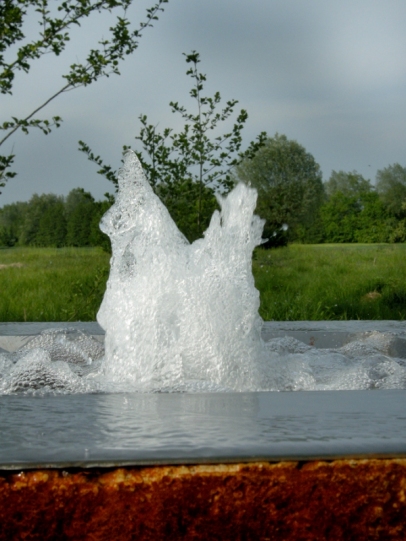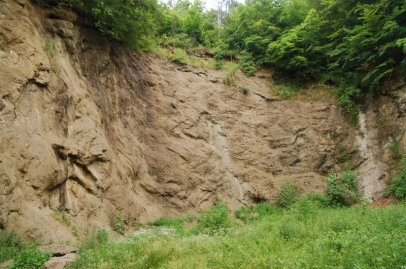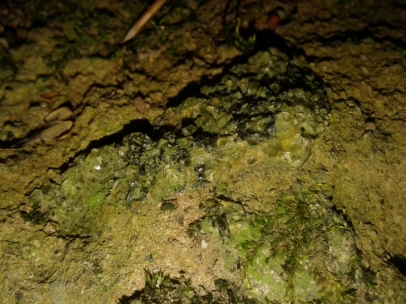Geological features
The most interesting geological features of Goričko are spring of mineral water in Nuskova and deposits of basaltic tuffs and pyroclastic materials in abandoned rock mines in Grad. Both are categorised as important valuable natural features of national interest. Among other important geological and geomorphological valuable natural features are the areas of Sotinski breg and Slatinska graba.
Sotinski breg is the highest point of Prekmurje and is build up from paleozoic methamorphic schists, which are old up to 500 million years and were created deep in the earth crust under immense pressure and temperature. These rocks are today exploited in rock mine as technical rock for road gravel. On the hill of Sotinski breg the biggest European owls - Eurasian eagle owls (bubo bubo) are nesting. With a little luck we can hear it in the dark.
The Mineral spring in Nuskova
Mineral spring in Nuskova is the natural source of mineral water. The cooling magma deep in the Earth crust releases a big amount of gasses (CO2 and others), which then rise up through the faults and dissolve in waters layers. When mixed with water, these gases form weak acids. Acids then help by dissolving minerals and other elements, which are present in the water when it springs on the surface. Mineral water in Nuskova contains bigger amounts of iron, which can be seen in the red colour (iron oxides) of nearby spring. This water is commonly used by locals and has an unique taste.
The Mineral spring in Nuskova ![]() K. Malačič
K. Malačič
Grad - deposits of basaltic tuff and pyroclastites
On the northern part of Grad village there is abandoned rock mine of basaltic tuffs and pyroclastites. These deposits are result of pliocenic volcanic activity before cca. three millions years. Basaltic tuff is sedimentary rock, which was created by compaction of vulcanic ashes, sands and other sediments. Within tuffs we can also find some pyroclastites. Most common are olivine nodules in small, oval form. In these nodules are small crystals of mineral olivine. On air these nodules get weathered fast. These deposits are the only known source of olivine nodules known in Slovenia.











